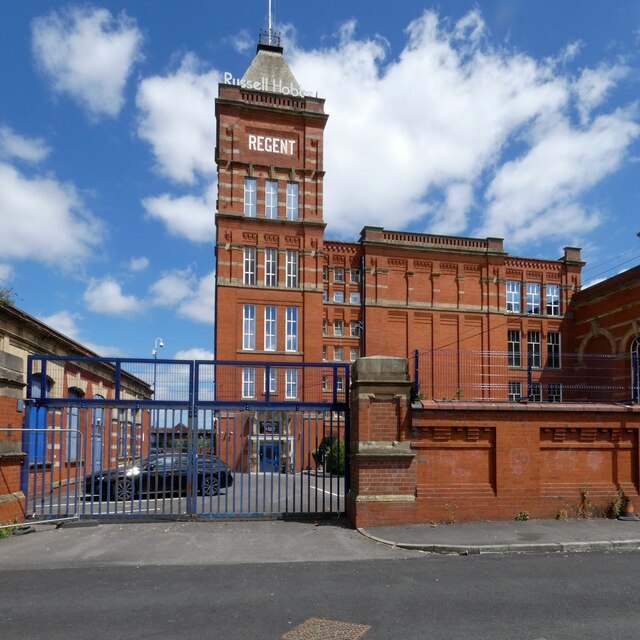Regent Mill
Introduction
The photograph on this page of Regent Mill by Gerald England as part of the Geograph project.
The Geograph project started in 2005 with the aim of publishing, organising and preserving representative images for every square kilometre of Great Britain, Ireland and the Isle of Man.
There are currently over 7.5m images from over 14,400 individuals and you can help contribute to the project by visiting https://www.geograph.org.uk

Image: © Gerald England Taken: 12 Jun 2021
The Grade II listed https://historicengland.org.uk/listing/the-list/list-entry/1376628 Regent Mill was built in 1906 by George Stott. The mill represents the ongoing use and development of brick arch floor construction by various branches of the Stott architectural dynasty, at a time when rural practices were experimenting with concrete floor construction. The mill was powered by an 1800 horse power vertical steam engine manufactured by Buckley and Taylor. It is a near-complete example of an early C20 ring spinning mill, designed by one of the most prominent specialist mill architects of the day. Despite alterations, the distinctive architectural quality of the building is undiminished, and the mill remains a notable element of Oldham's industrial landscape from the time when the town was the world's most prolific mill community. Built for the Regent Mill Co Ltd.it was purchased by the Lancashire Cotton Corporation in 1930. It was taken over by the Courtaulds Group in 1964. On ceasing textile production it was occupied by Pifco Ltd, and then by Salton Europe Ltd who now occupy this site. The company manufactures and markets home appliances under the Remington, Black & Decker, George Foreman, and Russell Hobbs brand names.

